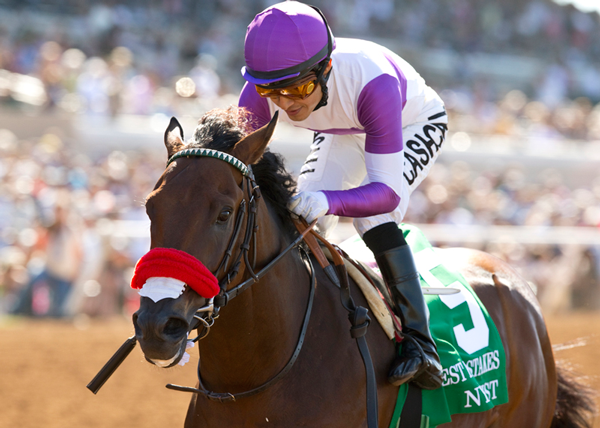
Benjamin Franklin is credited with the phrase, “In this world nothing can said to be certain, except death and taxes”. While I certainly agree with death, and taxes to an extent depending on how creative your accountant is, another certainty within the racing industry and its detractors is the safety of two-year-old racing. The topic is one that is hotly debated year after year, especially by owners in horse racing partnerships that descend upon Del Mar and Saratoga every year. So, just how safe is two-year-old racing, and should we wait longer before our horses run?
It is common knowledge that most race horses do not reach physical maturity until the age of around six years old yet most routinely begin training in earnest around eighteen months. Considering that the modern thoroughbred’s peak earning potential occurs during the age of three with diminishing returns at age four and beyond, most will point towards the money involved as the reason for the United States’ penchant for this type of racing. When you add in the lucrative breeding industry and the fact a horse can earn a significant amount more than they will ever earn on the race track, it further backs the claim. A closer look at the number reveals that isn’t the case.
The Jockey Club maintains an Equine Injury Database with statistics for race horses each year, and the figures paint a quite a different picture. A ratio that is used to gauge the risk involved with racing at a certain age or on a specific surface is the fatal injuries per start, defined as the number of fatal injuries that take place during a race per 1,000 starts. Starting with the year 2009, two year olds had a breakdown rate of approximately every 1.4 starts in 1,000. Fast forward to 2015, and that number drops to every 1.19 starts.
In fact, compared to all other ages of race horses, two-year-old racing is actually the safest of all groups. Three year olds in 2015 reported a breakdown rate of 1.5 per 1,000 starts, with four year olds and up at 1.72. When you consider the total number of starts for all ages in 2015 was almost 300,000, the numbers are even better.
Breakdowns in the US are often benchmarked against racing abroad that statistically have lower fatality rates. Opponents try to point the finger at any number of factors including race day medication and the always popular running of our horses on Lasix. They frequently point to the fact that European horses do not run on Lasix, even if they fail to mention that they do train on it. The figures are skewed in their favor in that most international racing is routing on the turf with the majority of our racing sprinting on dirt; the former comprising the lowest rates for all countries.
Studies have shown that horses in training at a younger age prior to skeletal maturity is vital to the development of soundness and strength. Horses’ skeletons respond to stresses by strengthening and without intense work, the bones won’t develop the proper strength. In fact, horses that are raced at two years old make approximately 25% more starts on average that a horse that was unraced at two. In other words, the more starts a horse has at the age of two the longer their career spans on the track.
While I am not a vet or claim to be, Dr. Dean Richardson is. He is professor of surgery and chief of large animal surgery at the University of Pennsylvania’s New Bolton Center in Pennsylvania. He states that, “Thoroughbreds mature faster than many other horse breeds.” “The 2-year-old colt or filly in training and racing can be likened to an 18-year-old human athlete. And then there are the precocious ones, the equine equivalents of LeBron James, whose physiologic age far exceeds his chronological age.” Dr. Richardson goes on further to say that, “Proper training and conditioning in young thoroughbreds prepares them better for what they are being asked to do: genuinely hard work.”
Hips don’t lie (Shakira Shakira!) and neither do numbers. I am not alone in my thinking that racing as a two year old is in the best interest of the horse if it is to have a long and healthy career on the track. With the proper care and training regiment, we should expect to continue to see less fatal breakdowns in the sport as evidenced by the downward trend over the previous years, with two year olds leading the charge.
{{cta(‘7f90c40d-053f-4143-b319-a06be60edf5d’)}}
